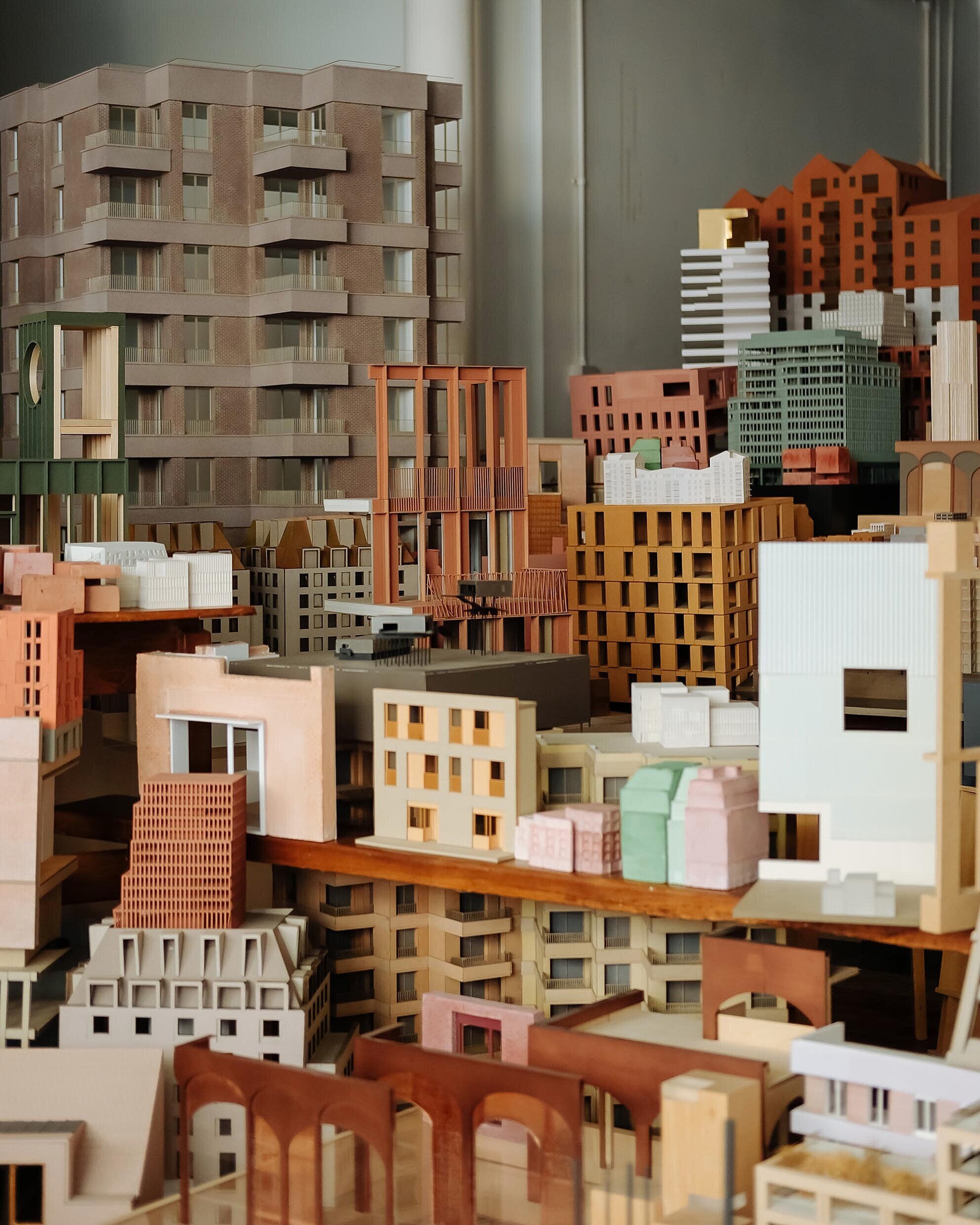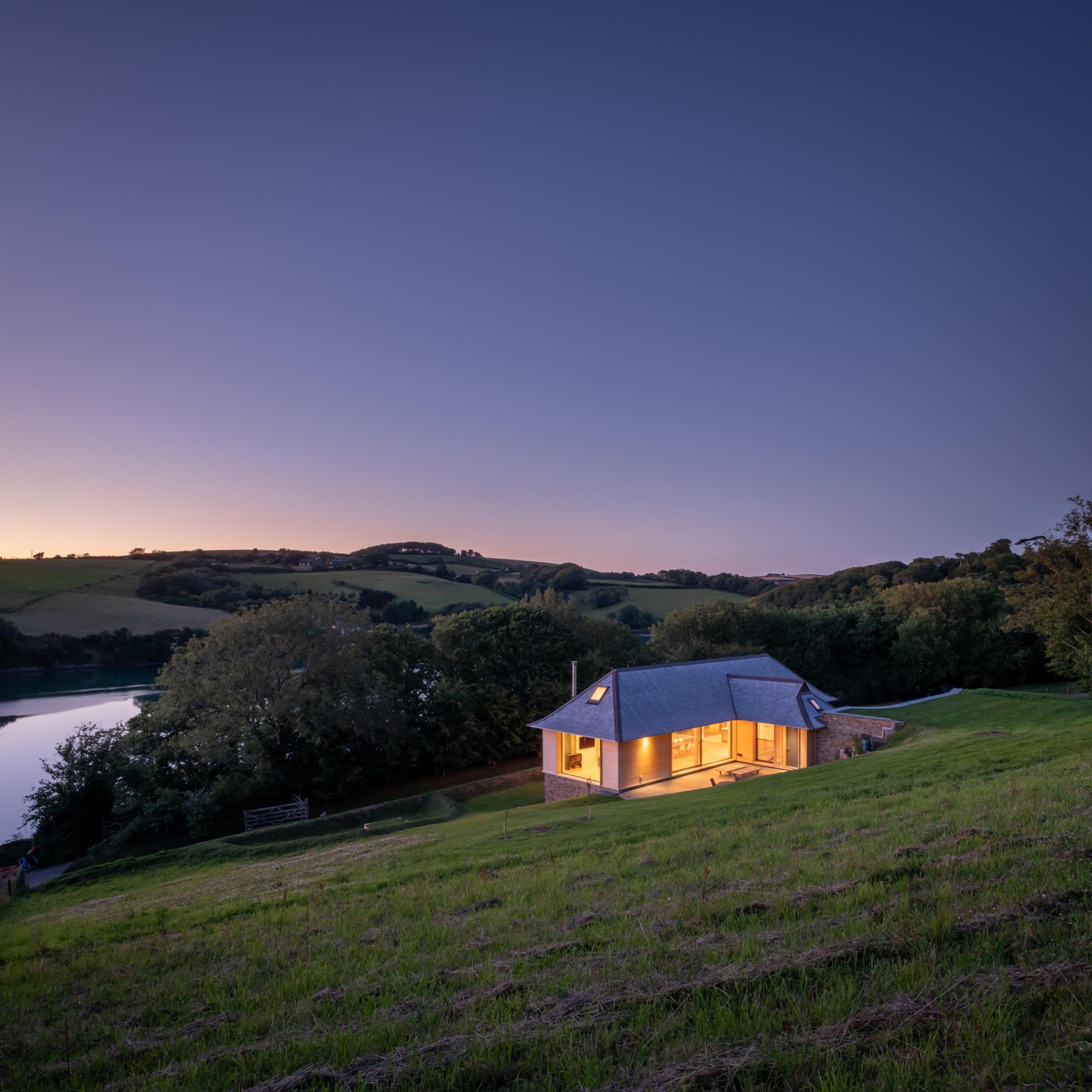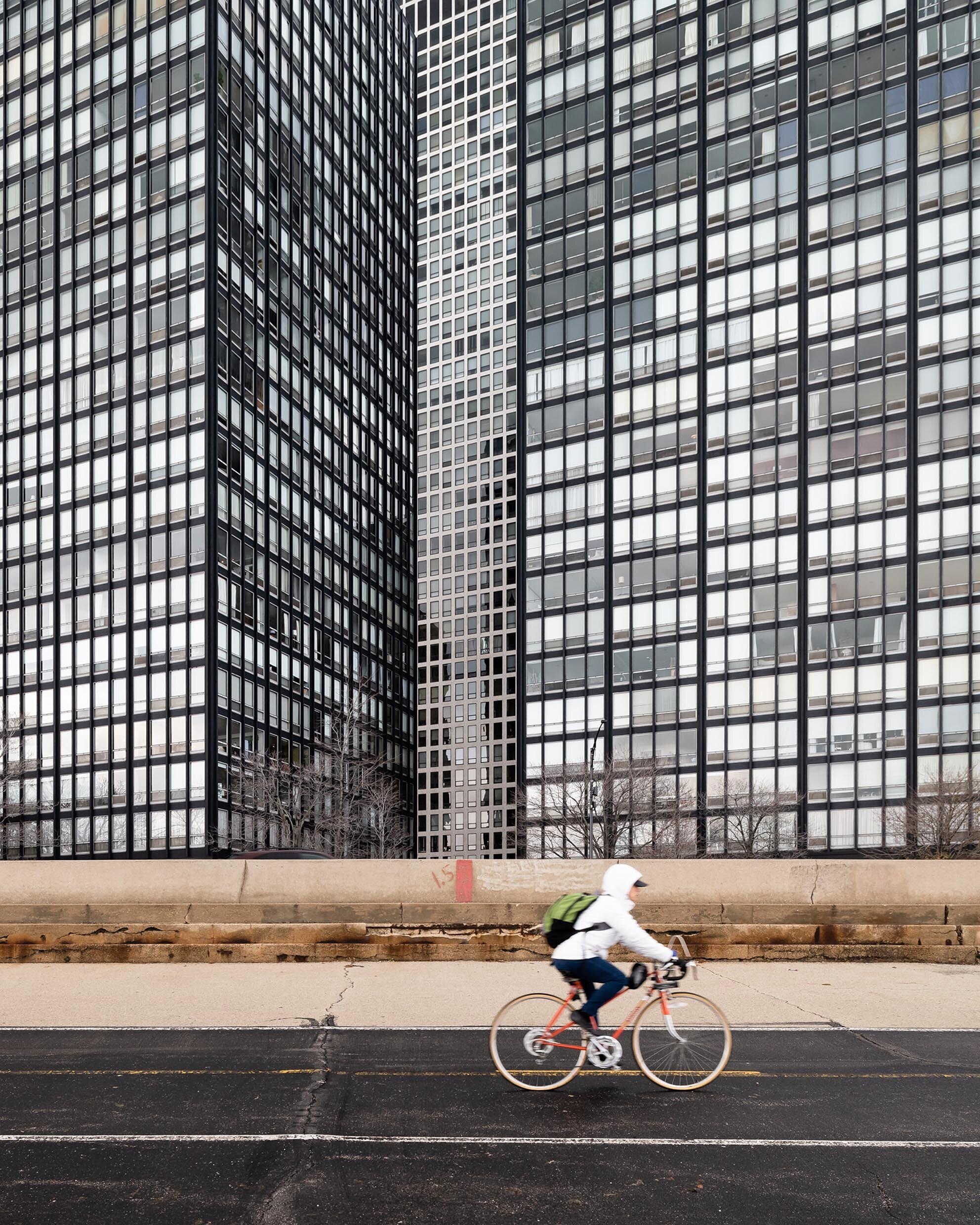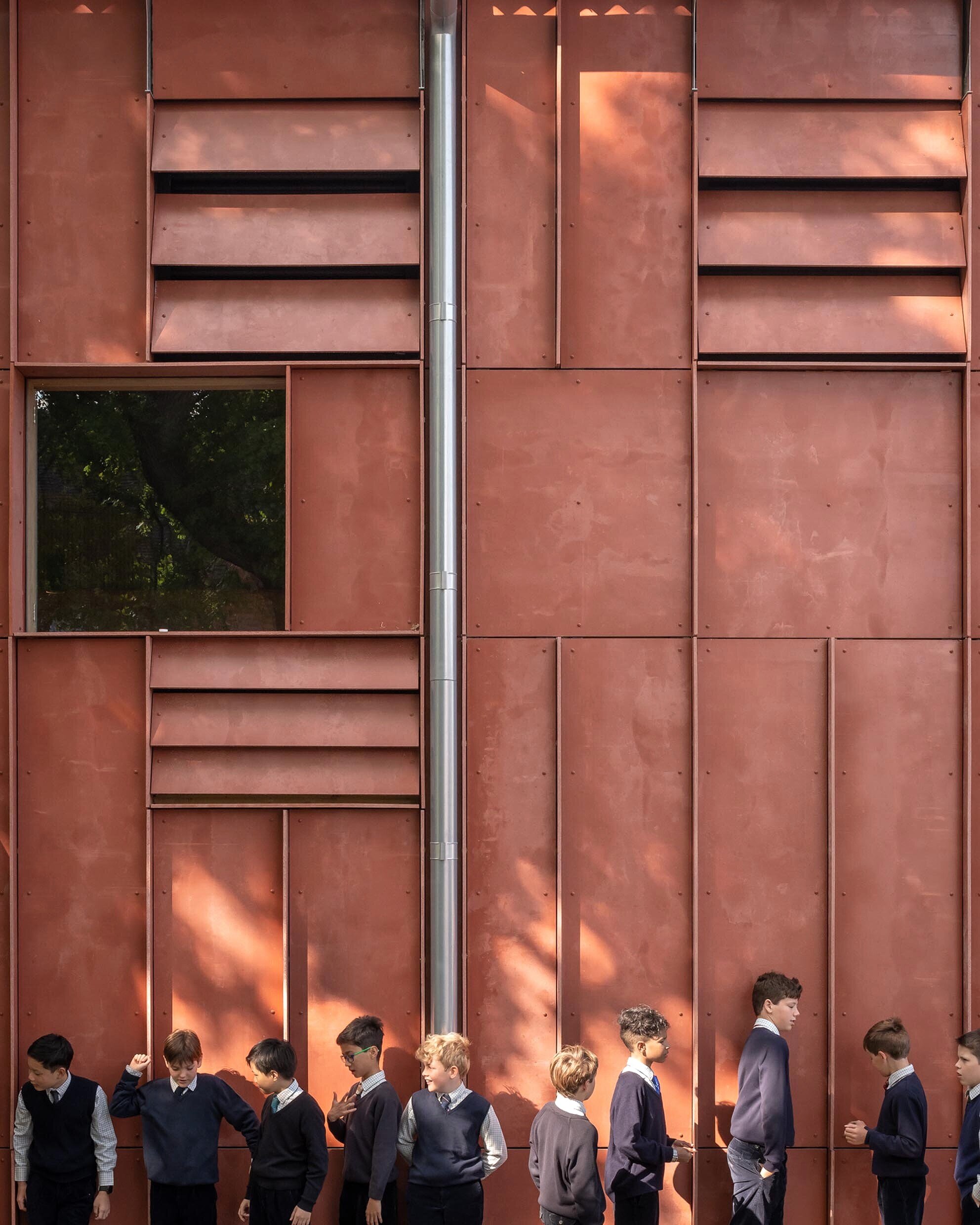An interview with architectural photographer & documentary filmmaker Jim Stephenson…aka ClickClickJim
“I spend some time watching how people and light interact with the space then I follow that around. I usually work slowly and a lot of my photo and film shoots become almost meditative.”
All photography by Jim Stephenson - Words by Pete Helme & Jim Stephenson
Jim Stephenson is an architectural photographer and filmmaker based in the UK, working worldwide.
Stephenson’s work is hallmarked by a keen eye for human interaction with architecture and the built environment, be it the occupation of space or the traces left behind. His photography and films lean to a documentary style and he has cultivated a meditative process allowing for the agility to document the small, fleeting moments of people and light in architecture.
After studying Architectural Technology and working in practice in the UK and US, he turned to photography and film making.
His photos and films cover work by architects such as Zaha Hadid, Assemble, Herzog & de Meuron, dRMM, Frances Kéré, Peter Zumthor, Rogers Stirk Harbour & Partners, Sou Foujimoto and many more, including a number of exciting new and emerging practices. His work has appeared extensively in print and online in publications such as The Architects’ Journal, Dezeen, The New York Times, The Sunday Times, Architecture Today, Architectural Review, A+U, Blueprint and Icon, amongst others.
His films about architecture have featured at international film festivals in London, New York, Milan, Paris, Sydney and Istanbul.
He holds a license from the Civil Aviation Authority to fly drones. He also curates The Miniclick Photography Talks, a series of free photography lectures and workshops founded in 2010.
Well first of all, hi Jim! What a strange world we find ourselves in at the moment. How are you?
Hi Pete, thanks for getting in touch with such thoughtful and engaged questions for me. Last year was pretty weird all round (and most of this year too, so far…), but rest assured, I didn’t learn how to bake bread or take up yoga. I did do a lot of reading, and I discovered a new found love of eating breakfast for dinner.
Can you tell us what has been keeping you occupied recently throughout 2020 and what your plans for the up-and-coming months in 2021?
Obviously 2020 and the national lockdowns were a time of uncertainty and upheaval for everyone here. Asides from staying healthy, in terms of work my first priority (what kept me busiest) was keeping in touch with my clients, not only to reschedule jobs I had booked in that were postponed in the lockdowns, but also as a way to guard against feeling isolated from the architecture community at large. I know a lot of my clients did the same, and I received more than one phone call that restored my faith in humanity at that time!
More generally, I took the enforced time off at the start of 2020 to properly slow down and take stock of my practice. I spent some time re-editing a few photoshoots I’d worked on years ago. Reviewing my older images was a really useful way to recognise how much my style and technique has changed and it’s something I want to carry on doing regularly. I also re-edited a couple of films I’d worked on years ago into smaller, differently themed versions, just for a bit of fun. The result was a new film about Zaha Hadid and one about Mole’s Japanese Tea House in The Fens.
Once the first lockdown eased, work picked up again. A highlight was a commission that came in from Open House London, to produce a series of thirty short films for their September festival. As you can imagine there was a hell of a lot of planning involved and in the end all the films were shot and edited over a six-week period in the summer. I had loads of fun making them, and developed such a good working relationship with the team there that we are now collaborating on some more films within the series.
My plans for 2021 are pretty fluid at the moment (as I think we all have to be). Lots of chats over Zoom in January with some friends and regular collaborators to discuss some new films (hopefully planning some exciting new projects with LionHeart, Laura Mark, Simon James, Piers Taylor and Nyima Murry, amongst others). I’m also doing a short evening course on documentary storytelling with UCL which is incredible. I’m learning so much from that, and spending much of my spare time watching the documentaries on the recommend watchlist. I did have quite a few photography shoots booked in for Jan / Feb but most of them have postponed because of the new UK lockdown, so I’m trying to do something with the time before a busy Spring on the horizon.
All that said, I don’t want to give the impression that it’s all wonderful right now - I’m finding things to keep myself active but it’s tough, as it is for everyone, so we’ve got to keep looking out for each other.
I first noticed your work a good 7/8 years ago and your film work stood out as something new and exciting which wasn’t being done at the time. Could you tell us what got you started?
It was never my plan to become a photographer and filmmaker. I was made redundant in the 2008 recession and had to find a new way to make money quickly. I had been working in architectural practice up to that point having followed in my father’s footsteps and training as an architectural technician (my Dad is an architectural engineer). Buildings and their design has been a lifelong passion (second though to Liverpool FC…). I’ve only ever wanted to work in architecture, since I was a kid, and now I have created a job for myself in which I get to explore and tell the stories of some really amazing projects.
I did initially try to find another job in practice after being made redundant, but there wasn’t much around. Architects were having to work even harder to bring new work in however, so they were still commissioning photos. I’d done a little in-house photography work but nothing major so it was a steep learning curve. The first year was pretty hairy and was all about paying the rent. From there, it all grew.
You have a very fun and likeable way about you with a very distinctive style. How have you approached your career in standing out from the crowd and getting noticed?
This one is a bit harder to answer; if only there was a magic formula for standing out. Having been on the commissioning side of architectural photography, sitting in on meetings with architects discussing who to get to photograph our work, I had a bit of an insight when I first started which definitely helped. I know I have a bit of a style to my work and that I can take a decent photo, but it’s always been important to remember that being able to take a good photo is only one part of this job. You also have to try and make sure people know you exist and, importantly, try to make working together an enjoyable experience for both sides.
I hear that, having an enjoyable work environment is key to creativity I find. That is when the best ideas can flow when everyone is relaxed and engaging as a team. In regards to letting people know you exist….I’m still working on it!
As video becomes more prevalent here do you see the future of photography heading, not only in our genre but as a whole?
To be honest with you, I think there is, and will always be, a place for both photography and moving image within the industry, as they both perform very different functions. Historically the two mediums have existed side by side for almost as long as they have existed at all, and I don’t think that is about to change.
The most important thing for me, is to remember that all this technology, and all the advancements with it are for us, to make our work and life easier. We’re not in service to the technology, so no matter how much it changes, we’re in control of what we want to do with it. For me, that’s storytelling, so whatever new gadget comes out, the core of my work stays the same. These technologies provide us with more and more platforms to produce and experience all kinds of visual experiences, I think the key for the future is to develop an adaptable practice and not get too stuck in your ways, but remember who’s in control of it.
I couldn’t agree more. There are so many platforms out there now with huge engagements. I think the key is producing high quality content not just content for content sake. I’ve been trying to push myself out of my comfort zone the last few years, learning new techniques and post productions skills. I feel it is an endless chasm for creativity.
What equipment you have in your bag and enlighten those who aren't familiar a little bit more about your process.
I used to think that I wasn’t interested in camera kit, (I still do think think that a little bit). When I was starting out, I would sling my camera, a couple of decent lenses and a very hard working tripod on my back and I was out the door. As my business and preferred method of working has developed towards a more narrative style, so have the bits of kit that I use.
First and foremost though, I’d say that my bag itself is really important, I got it on the recommendation of a friend and collaborator and it makes my life so much easier (I use a ThinkTank roller bag and a Peak Design backpack). I try to be efficient with what I carry, and everything in my bag has a purpose in service of the story I’m trying to tell. There’s no excess. I’m not very interested in gadgets, but you can’t really avoid it in this industry.
My main camera is a Nikon d850 and I have a selection of prime and TSE lenses, plus a teleconvertor. I have a PfCO (or whatever it’s called now) for flying a drone and I use DJI like most people. For the films I do, good sound is critical so I have a range of RODE and Sennheiser mics and Zoom recorders and I use Rhino Sliders and a DJI gimbal for a bit of movement.
One of the most important things I have is a Fuji XT-2 that I keep clipped to the side of my tripod (where the Nikon stays most of the time). Because so much of my work is based around human interaction with architecture, it’s really useful to have a smaller, lighter camera that I can be a bit quicker and more reactive with.
Having said all that, the most important thing in my kit bag is a pack of flapjacks and a flask of tea. No point trying to do good work on an empty stomach.
In terms of process, a lot of my work is about observation so I rarely start photographing or filming as soon as I arrive at the location. I spend some time watching how people and light interact with the space then I follow that around. I usually work slowly and a lot of my photo and film shoots become almost meditative - in that meditative way, the shoots I do are really good for my mental health and I have been missing them for that reason during the lockdowns in the UK.
Very similar to my bag..
Where did the inspiration come from in creating your stylised look?
I’ve never really thought of it as a stylised look. I guess I have a style, but it’s difficult to define that yourself. Influence comes from all different sources. I suppose a lot of my work is a bit less high-key than a lot of architectural photography traditionally is, and I definitely embrace darker tones when they’re there - when I filmed the tea house I mentioned before, the architect said the film reminded him of ‘In Praise of Shadows’ by Jun'ichirō Tanizaki. I’d never read it at the time, but it’s gone on to be a big influence.
My work has always had a focus on community and people using spaces so that interaction between humans and buildings is critical to my images, and I think I’ve developed a definite textural quality to my images more recently (and the shadows play into that). What I’m trying to do is to give the viewer of the photos, or the audience of a film, the information and tools they need to build up an idea in their minds not just of what the space looks like, how it’s laid out and how big it is, but also what it feels like to be there. To address the spaces with more than just the eyes.
How the sunlight would warm up the floor, or how sound would travel from one space to another. It means that details and more atmospheric images and clips can be just as important as those informative wide shots that show context and scale.
You have achieved such a wide variety of images in your portfolio to date, do you have a favourite subject you like to shoot and which do you prefer, photography or video these days?
In truth, I really love documenting projects that I would have liked to have been involved with as a designer. Often that’s community based buildings, or buildings that are well used by the people they serve. Often these are smaller, quieter buildings that are well loved. Good light is really important as well, as is a good sense of materiality (the light has to rest on something).
To answer the second part of your question, I can categorically say that I don’t have a preference between moving image and still photography. In fact, I really enjoy producing both (often at the same time). As I said earlier, I think they function very differently from each other, and I am still learning and loving each of them! Right now about half my commissioned work is for photos of architecture and half is for films about architecture. I like that mix.
How did your relationship with Piers start and what would you say is the highlight of your career to this point?
Years ago, I was asked by a friend (Andy Matthews) to join him on photographing an annual project called Studio in the Woods, in which people spend four or five days living in the forest, building temporary and experimental structures and pavilions. It is such a great project and I met Piers there as he’s the founder of it.
Since then I realised we have a lot of mutual friends and collaborators, including Laura Mark who I make a lot of my films with, so when we eventually did begin to work together it felt very natural. We share similar ideas about architecture on screen, and finding a slower, more reflective way to tell the story of buildings and architects.
I know this sounds like I’m just plugging my most recent film, but a genuine career highlight has been getting the opportunity to make a film (with Piers), with Sarah Wigglesworth and to hear her discuss not only the house that we were filming in, but more generally her working ethos and approach to architecture.
I had to pinch myself a couple of times - when I was at uni I wrote my dissertation on building with straw bales and I based a lot of my research on the home and studio she designed and built with her partner Jeremy Till. It’s mad thinking about the people I’ve been lucky enough to meet and work with. I’m lucky.
I have to admit to having a bit of a man crush on Piers. I love the collaborative work you are both creating at the moment and always seek it out.
Do you have any favourite photographers that inspire you and anyone you think we should be keeping an eye out for?
Oh loads! I used to run Miniclick (an organisation that hosts free monthly photography lectures), so I got a really good education on photography through that. Saul Leiter is a big influence - all those amazing, painterly colour images. Chris Killip as well (the Skinningrove series is beautiful).
Tyler Mitchell is killing it at the moment, his new book is flying off the shelves. Same goes for Maria Lax’s work ‘Some Kind of Heavenly Fire’, another book worth investing in.
I’ve always loved Murry Ballard’s ‘Prospect of Immortality’ and Jack Davison’s ‘Song of Flowers’ is one of my current favourite photobooks. Ameena Rojee’s ‘Love Letter to Croydon’ too. I recently saw Nadja Ellinger do a talk about her work that was really compelling. There’s loads!
I also love the podcast that Roger and James Deakins do (Team Deakins) - they’re responsible for some of the greatest cinematography ever, so their insights are wonderful.
What has been your favourite takeaway in all the lockdowns?
My wife is an excellent cook. She would kill me if I said our local Indian restaurant.
Haha….I meant more what have you taken away from the experience but good to know there are some great Indian takeaways in Brighton.
A huge thanks Jim for taking the time out to let us get to know you a bit better. We will continue to look out for your work. We wish you all the best for 2021 and beyond.
Here are a few links to some Jim’s films
What does it take to make a building
To see more of Jim’s work visit his website - www.clickclickjim.com
Jim Stephenson - Portrait by Edward Bishop















